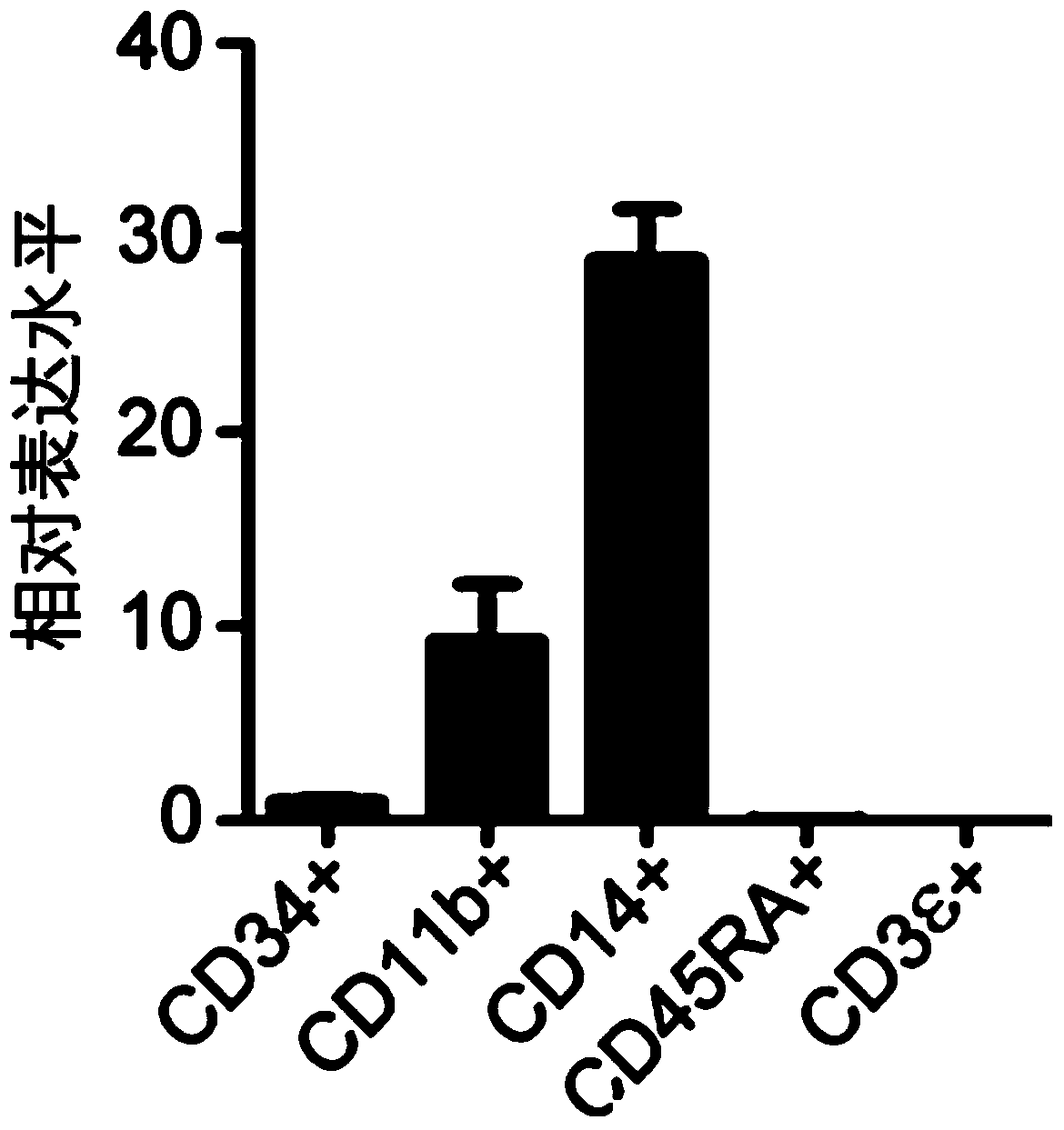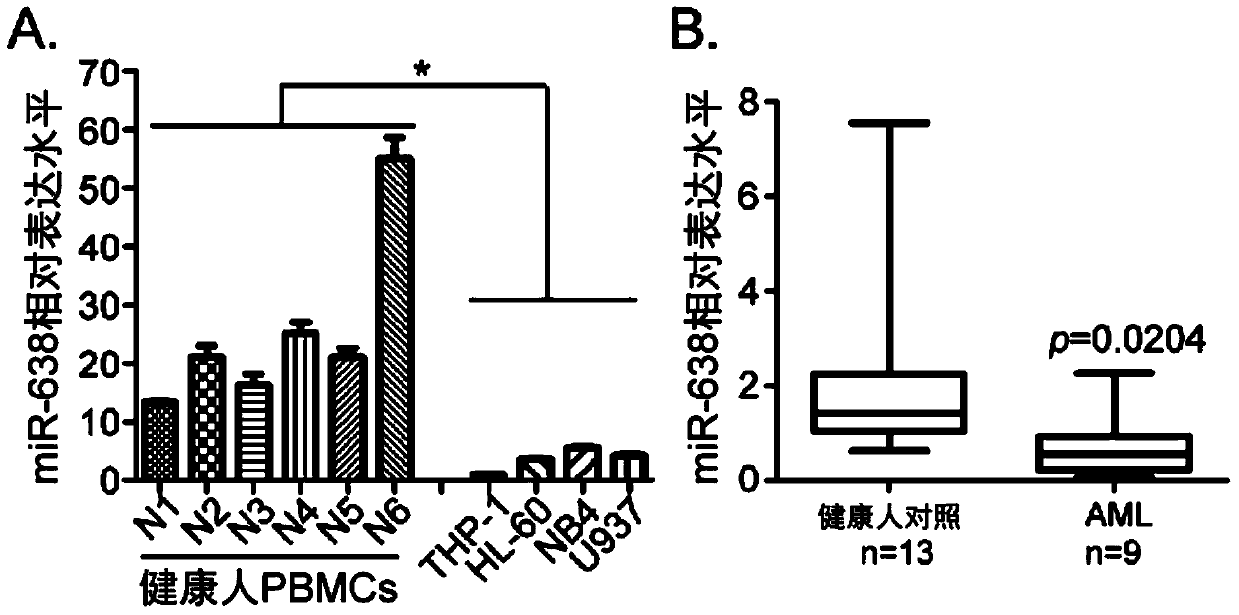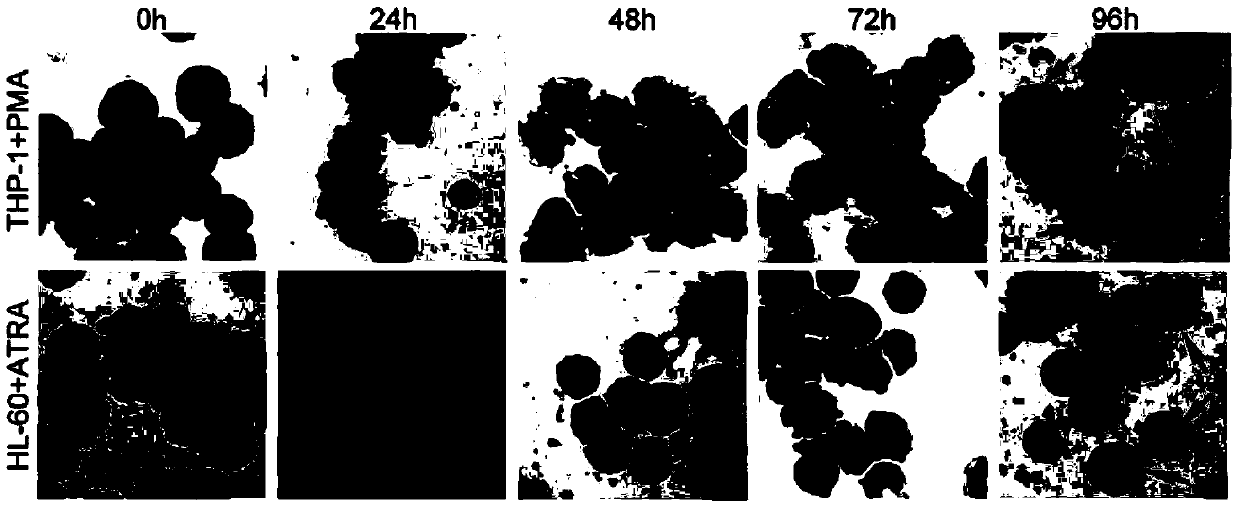Application of miR-638 in resisting acute myelogenous leukemia
A technology of 1.mir-638 and 2.mir-638, applied in the field of molecular biology, can solve problems such as cell cycle abnormality, disease recurrence and mortality
- Summary
- Abstract
- Description
- Claims
- Application Information
AI Technical Summary
Problems solved by technology
Method used
Image
Examples
Embodiment 1
[0067] Example 1 Investigation of the expression of miR-638 in blood cells from different sources
[0068] In order to explore whether miR-638 is involved in the normal hematopoietic process and the development of leukemia, this example isolated and detected the background expression level of miR-638 in the myeloid, lymphoid and hematopoietic pluripotent stem cell populations in the peripheral blood of healthy people ; and the expression levels in peripheral blood mononuclear cells of healthy controls, various leukemia cell lines, and peripheral blood blasts of AML patients.
[0069] Peripheral blood and umbilical cord blood of AML patients were obtained from Zhongnan Hospital of Wuhan University, Tongji Hospital Affiliated to Huazhong University of Science and Technology, and Jiangsu Provincial Hospital of Traditional Chinese Medicine. Each sample obtained the informed consent of the patient and the approval of the corresponding medical ethics committee. Leukemic cell lines i...
Embodiment 2
[0076] Example 2 Analysis of expression changes of miR-638 in the process of induction and differentiation of leukemia cells and peripheral blood blast cells of AML patients
[0077] 1. Analysis of expression changes of miR-638 during induction and differentiation of leukemia cells
[0078] In order to further verify the correlation between miR638 and the occurrence and development of leukemia, this example uses the in vitro differentiation model of leukemia cells to analyze the relationship between the expression of miR-638 and the differentiation of leukemia cells. HL-60 and NB4 cells can differentiate into granulocytes under the treatment of all-trans retinoic acid (ATRA); THP-1 and HL-60 cells can differentiate into mononuclear cells under the induction of phorbol ester (PMA). Cell Differentiation. The morphological changes of leukemia cells during differentiation were observed by Wright's Giemsa staining. image 3 It shows the cell morphology changes when THP-1 and HL-6...
Embodiment 3
[0083] Example 3 The expression changes of miR-638 in leukemia cells significantly affect the cell differentiation process
[0084] In order to study the effect of miR-638 on the differentiation induction of myeloid leukemia cell lines in vitro, this example artificially regulates the cells (THP-1 and HL-60) the expression level of miR-638. miRNA mimics (mimics) and inhibitors (inhibitors) and their respective controls were purchased from Ribio Biotechnology Co., Ltd., Guangzhou, Guangdong, China. The mimic sequence was completely consistent with the mature miR-638 sequence, and the inhibitor sequence was identical to the mature miR-638 sequence. The sequence of miR-638 is perfectly complementary. By using IfectRNA Plus transfection reagent (product of PharmInova Company) and BLOCK-iT fluorescent molecule (FITC) labeled oligonucleotide (product of Invitrogen Company), the transfection efficiency of these oligonucleotides has reached above 90%.
[0085] By semi-quantitative (...
PUM
| Property | Measurement | Unit |
|---|---|---|
| Density | aaaaa | aaaaa |
| Density | aaaaa | aaaaa |
| Density | aaaaa | aaaaa |
Abstract
Description
Claims
Application Information
 Login to View More
Login to View More - R&D
- Intellectual Property
- Life Sciences
- Materials
- Tech Scout
- Unparalleled Data Quality
- Higher Quality Content
- 60% Fewer Hallucinations
Browse by: Latest US Patents, China's latest patents, Technical Efficacy Thesaurus, Application Domain, Technology Topic, Popular Technical Reports.
© 2025 PatSnap. All rights reserved.Legal|Privacy policy|Modern Slavery Act Transparency Statement|Sitemap|About US| Contact US: help@patsnap.com



